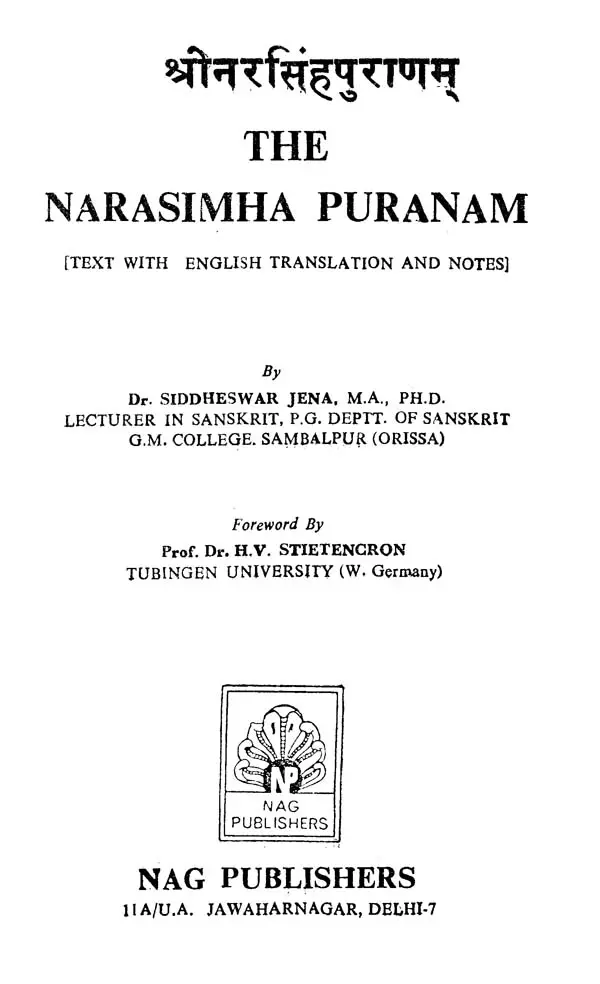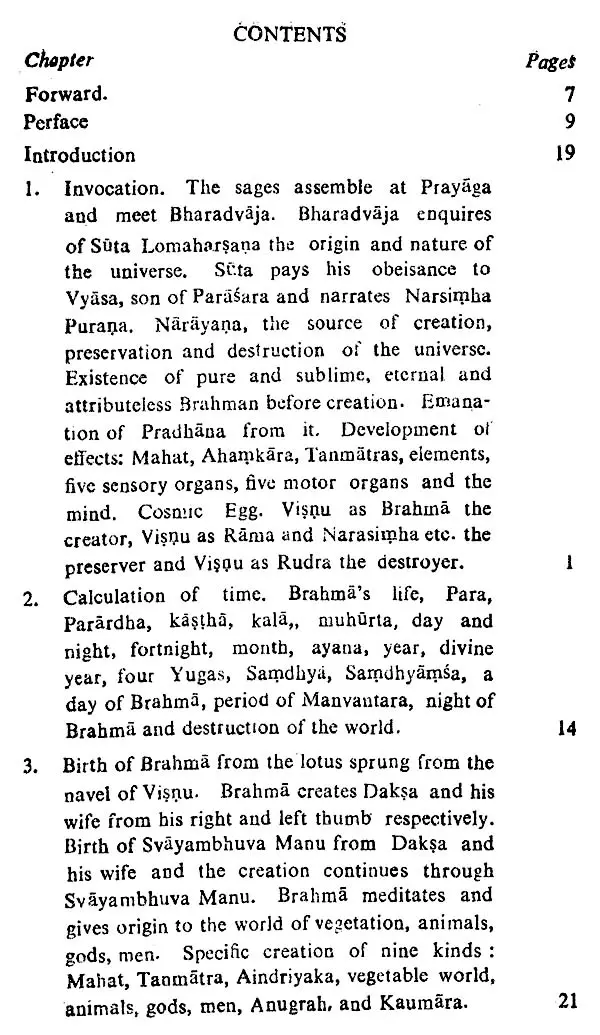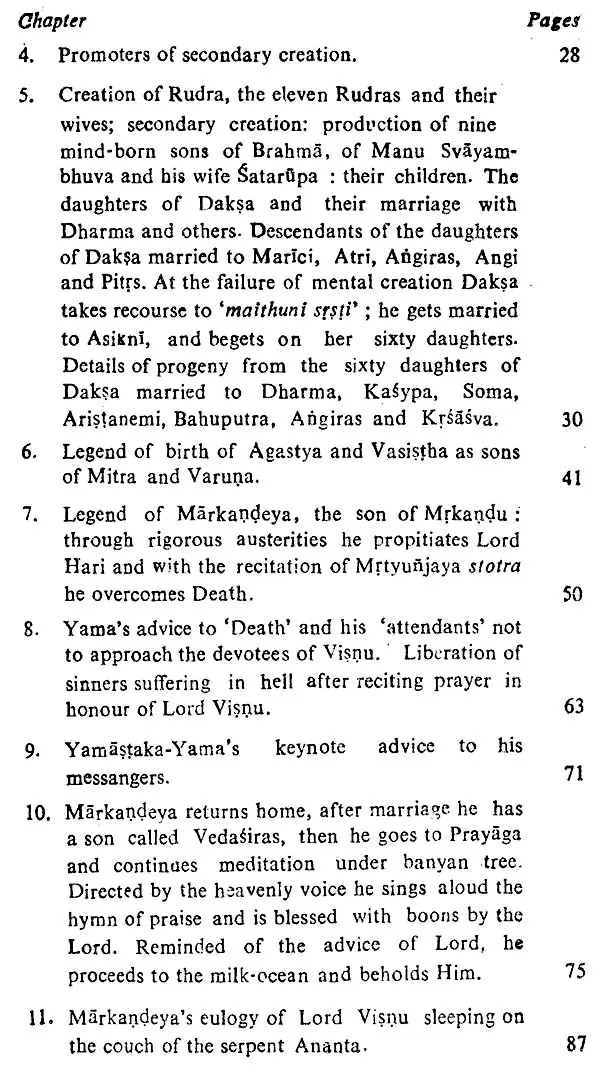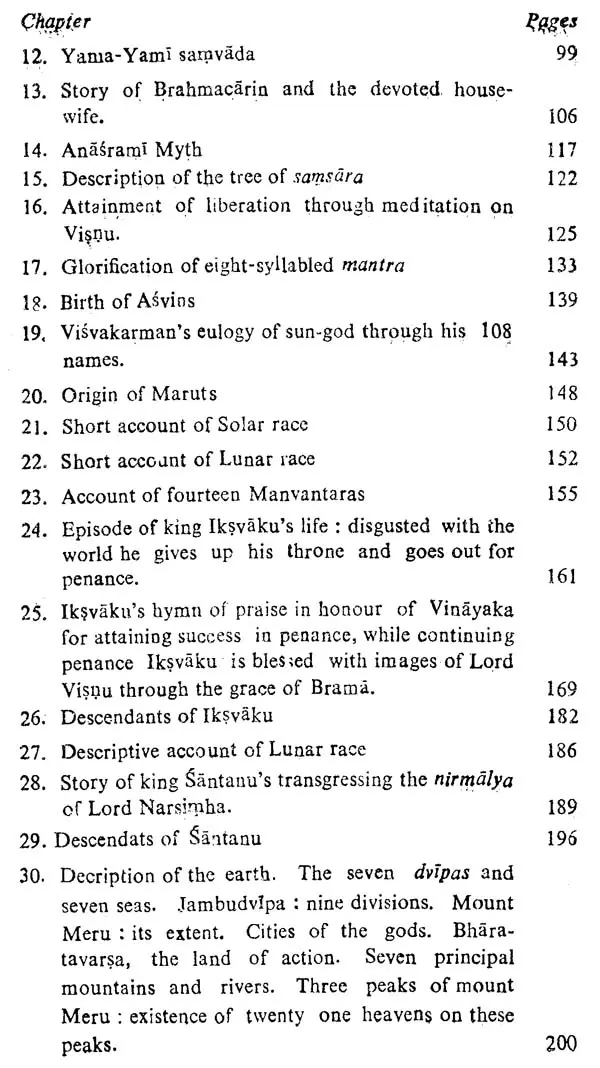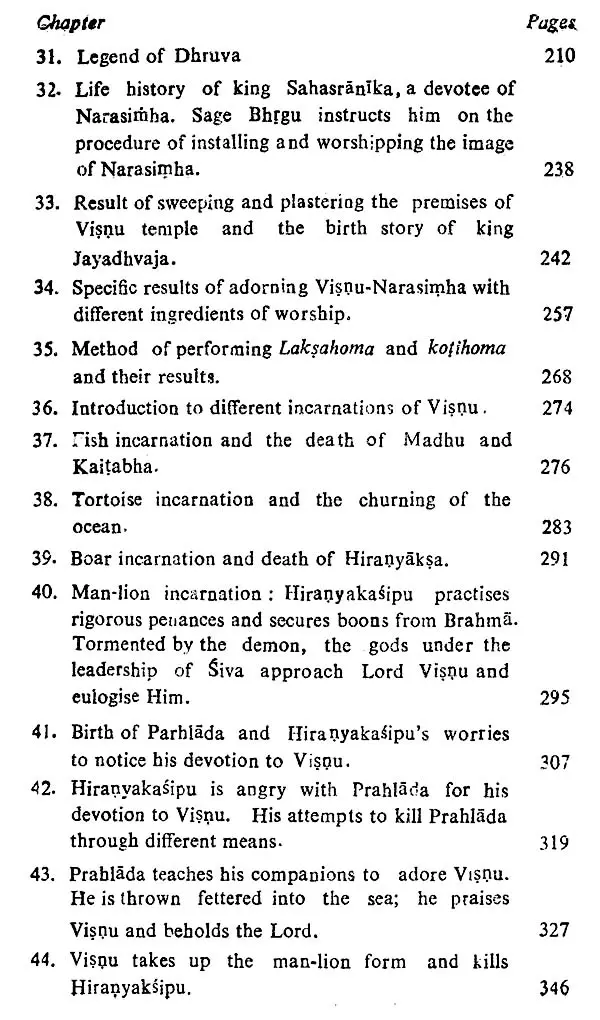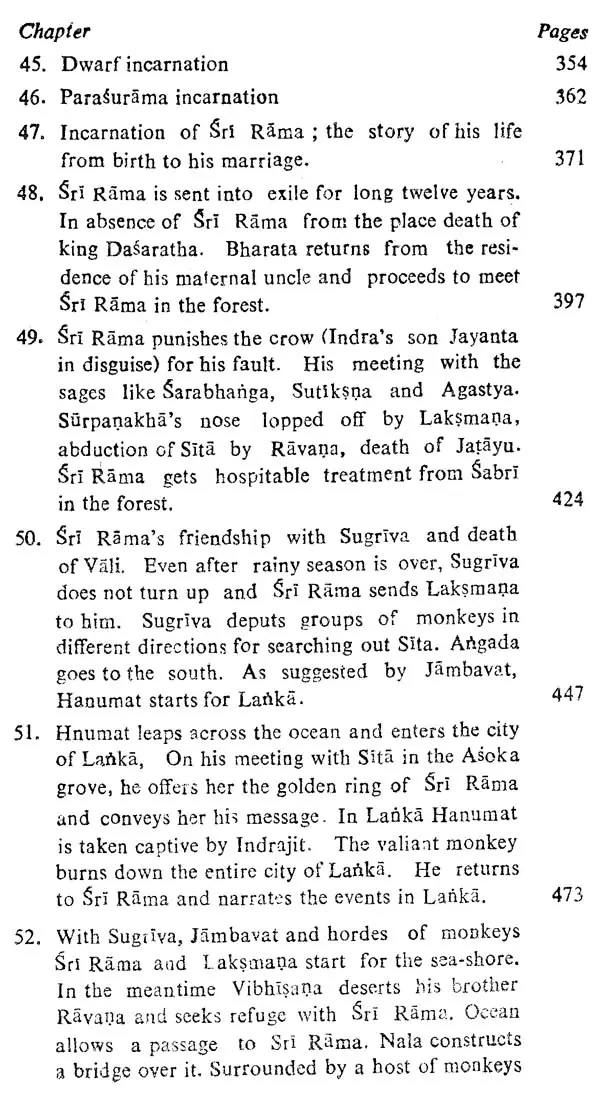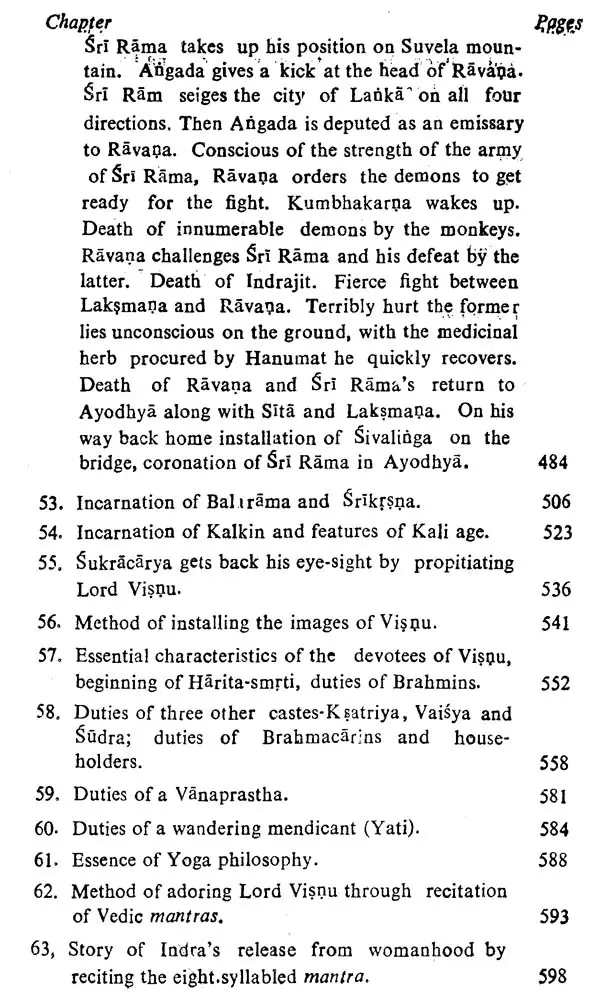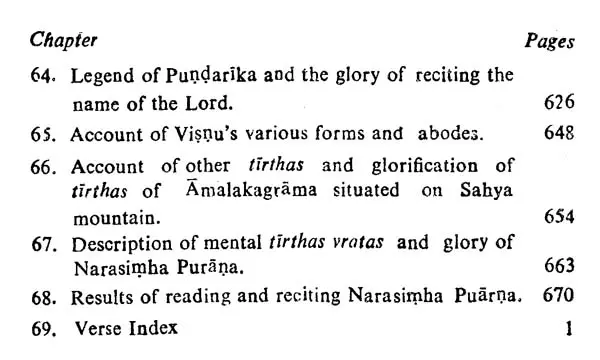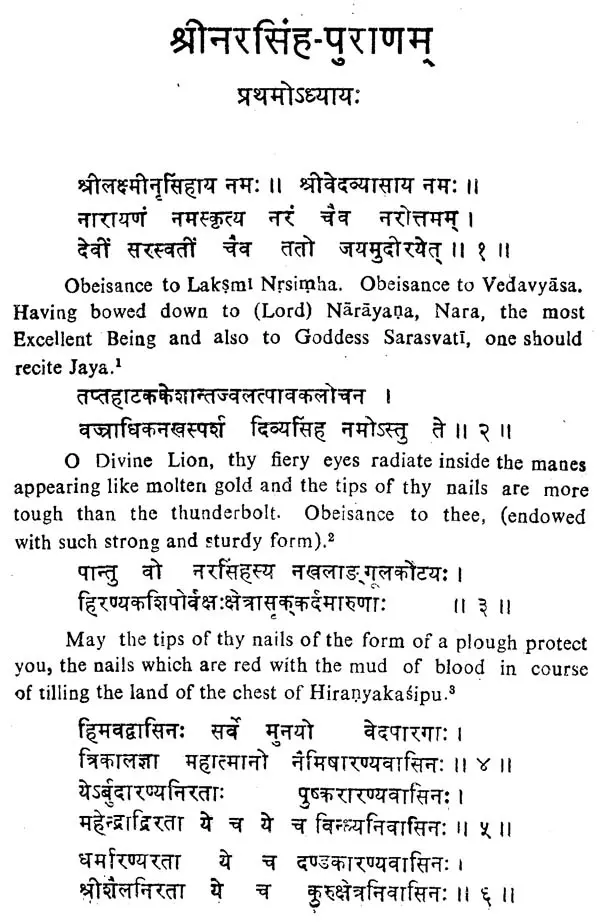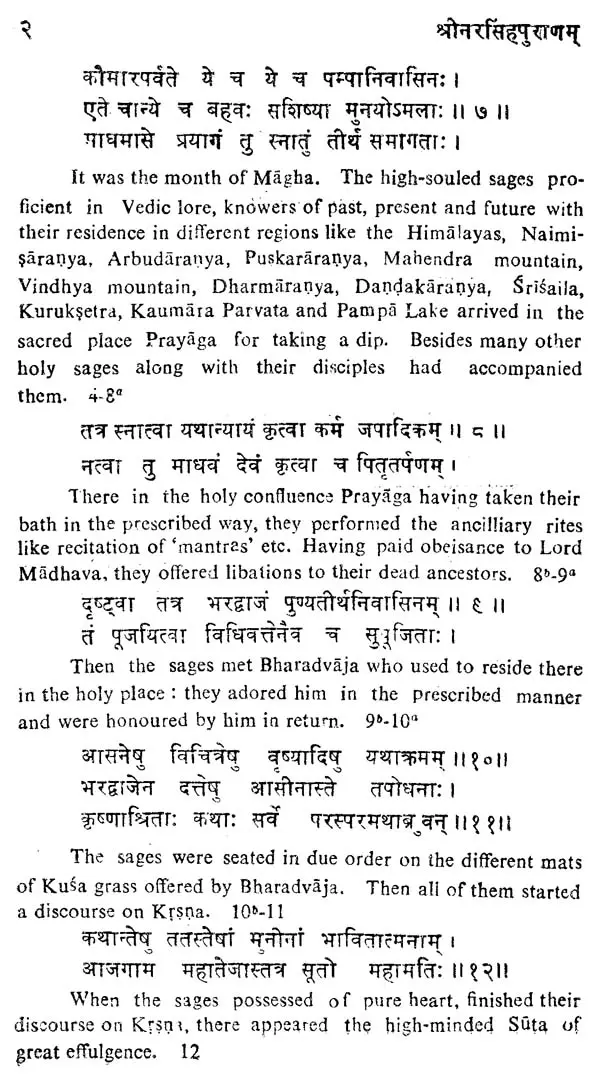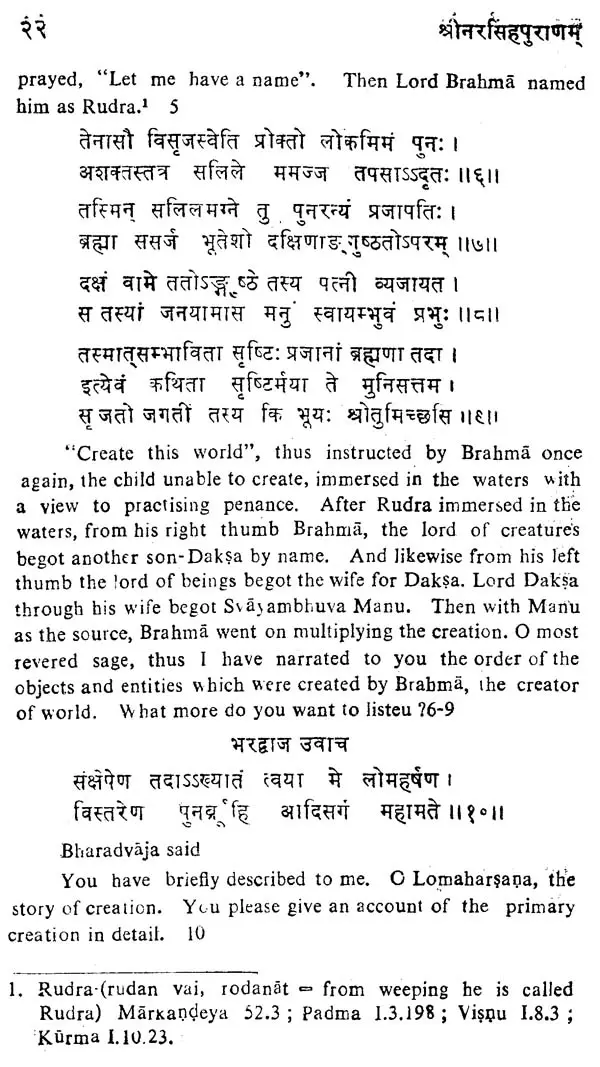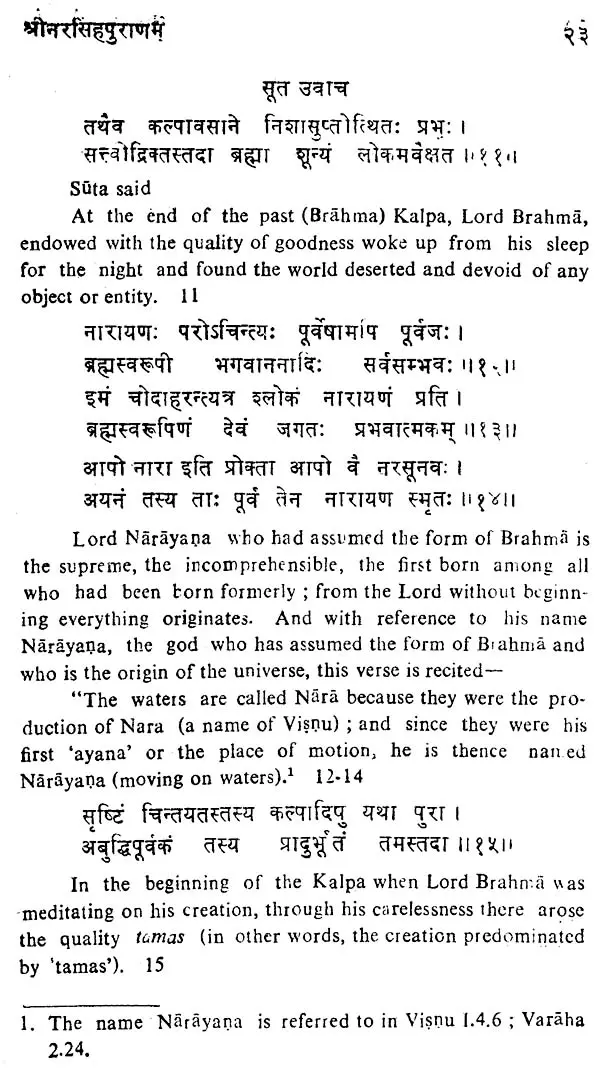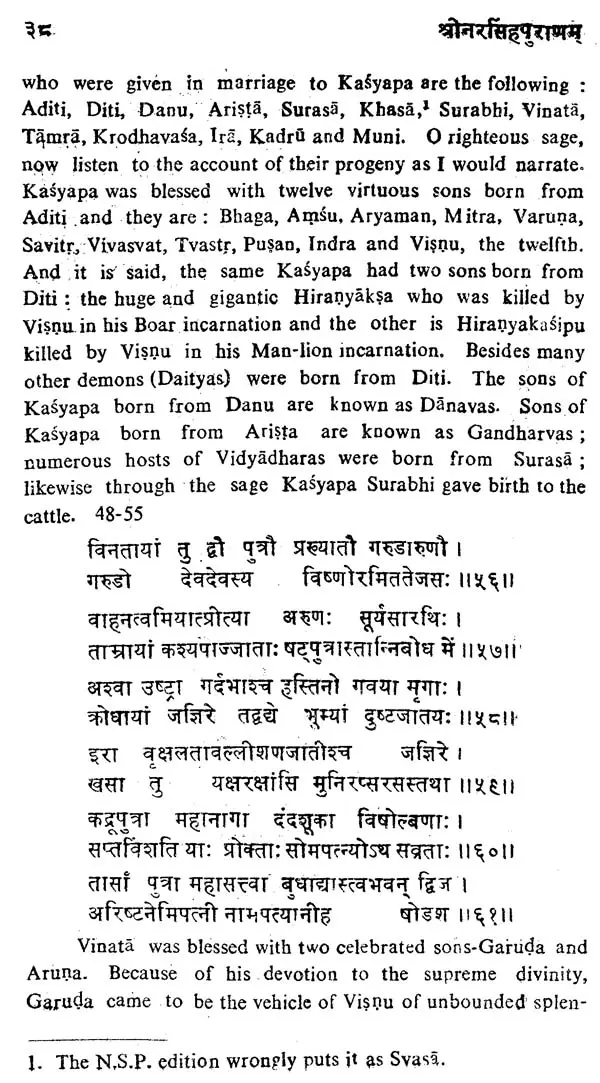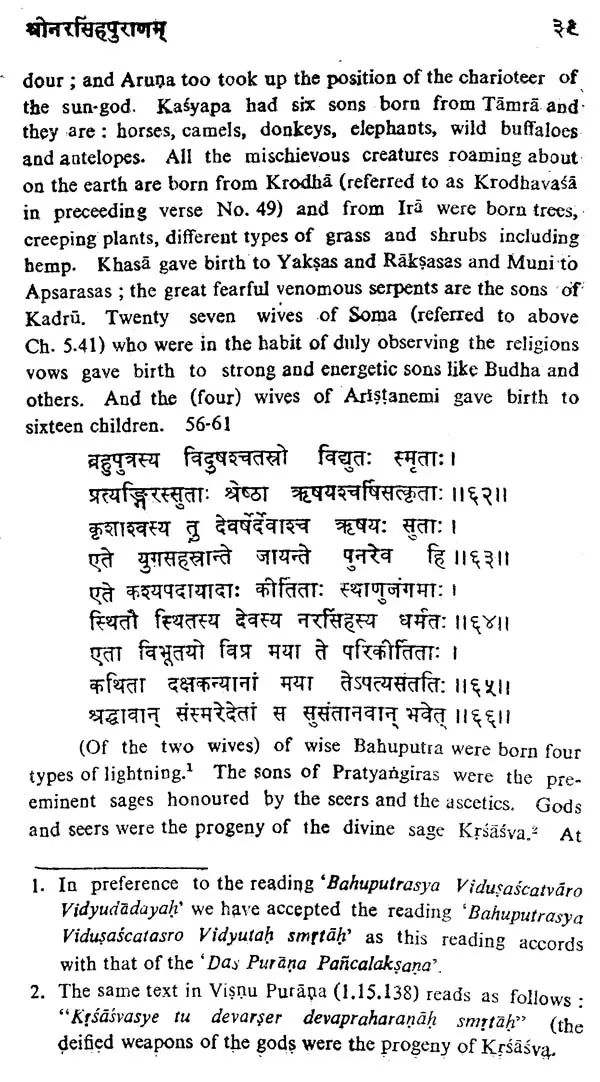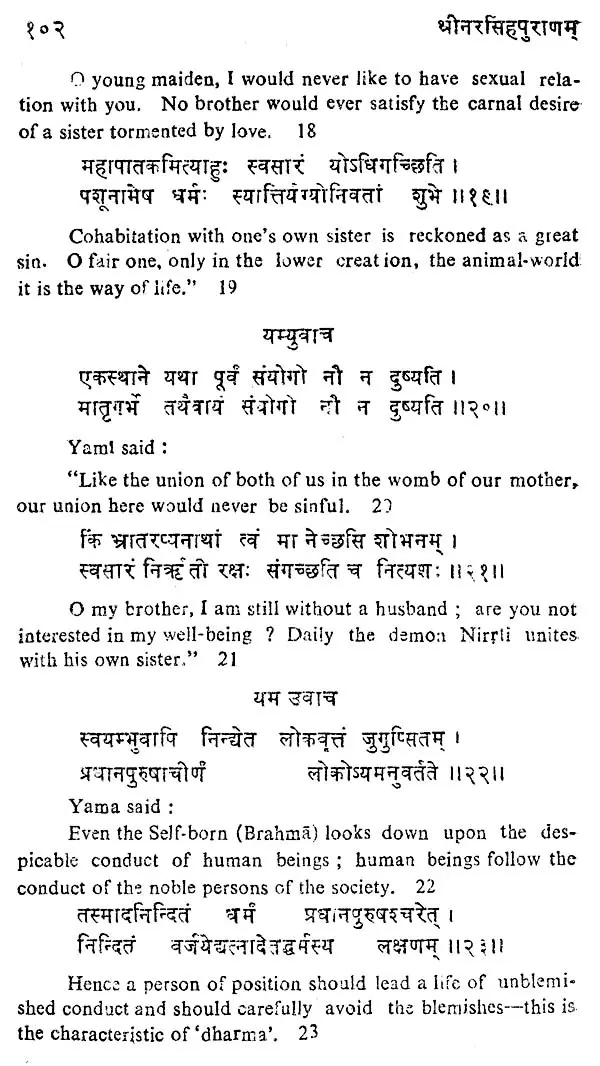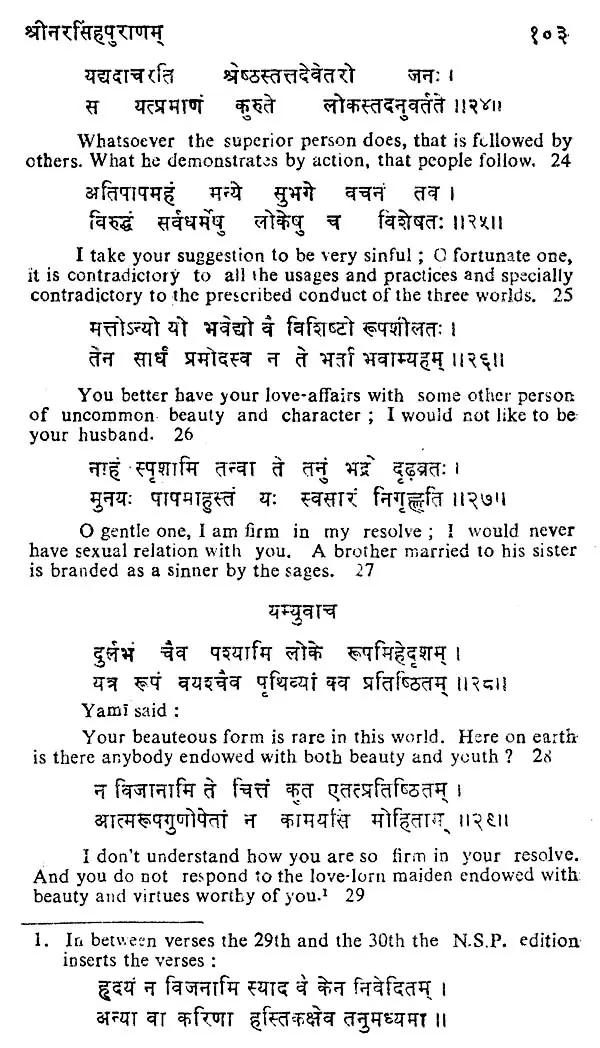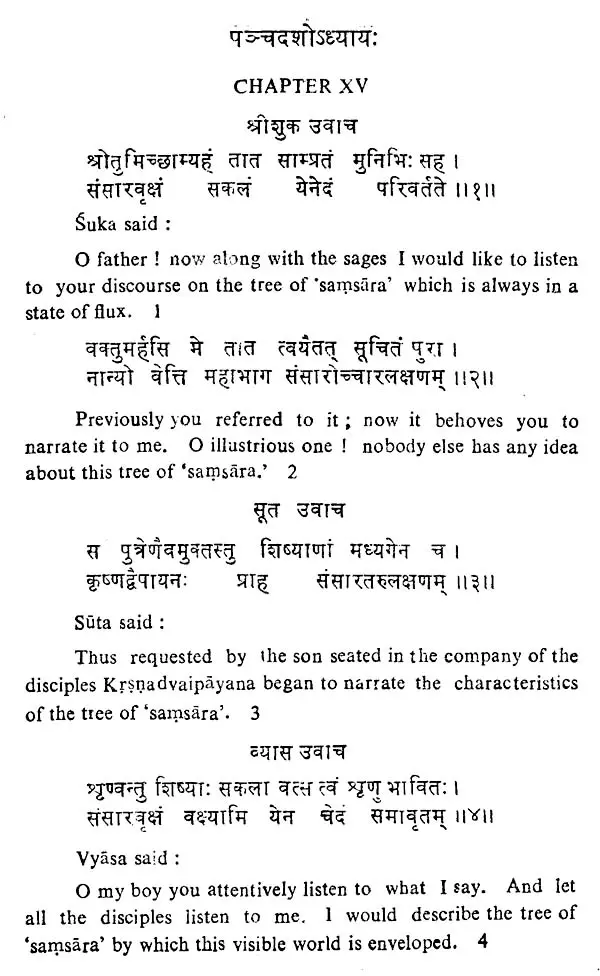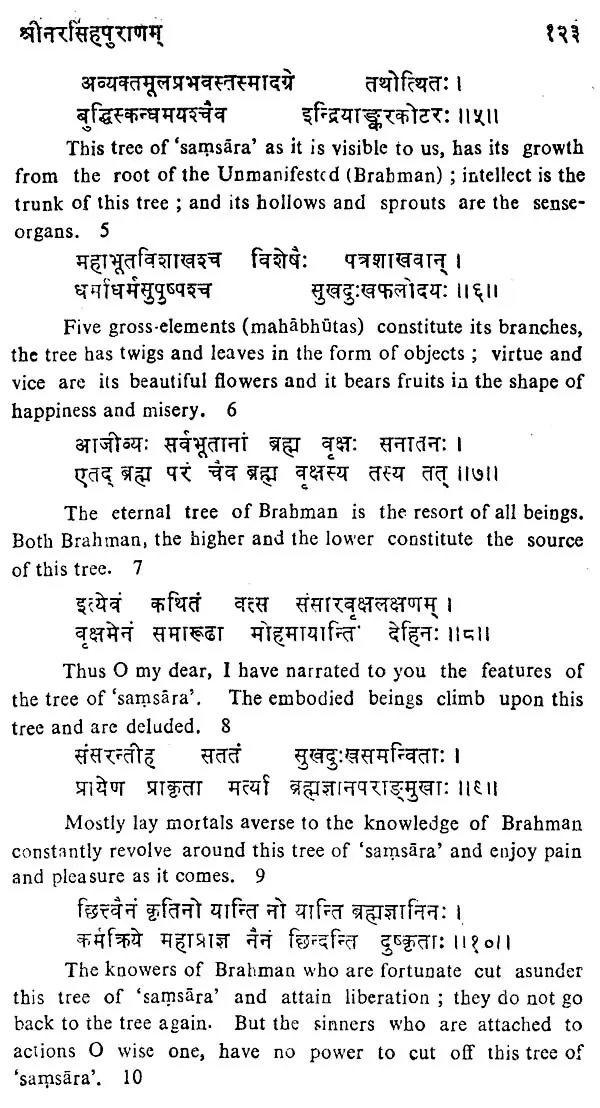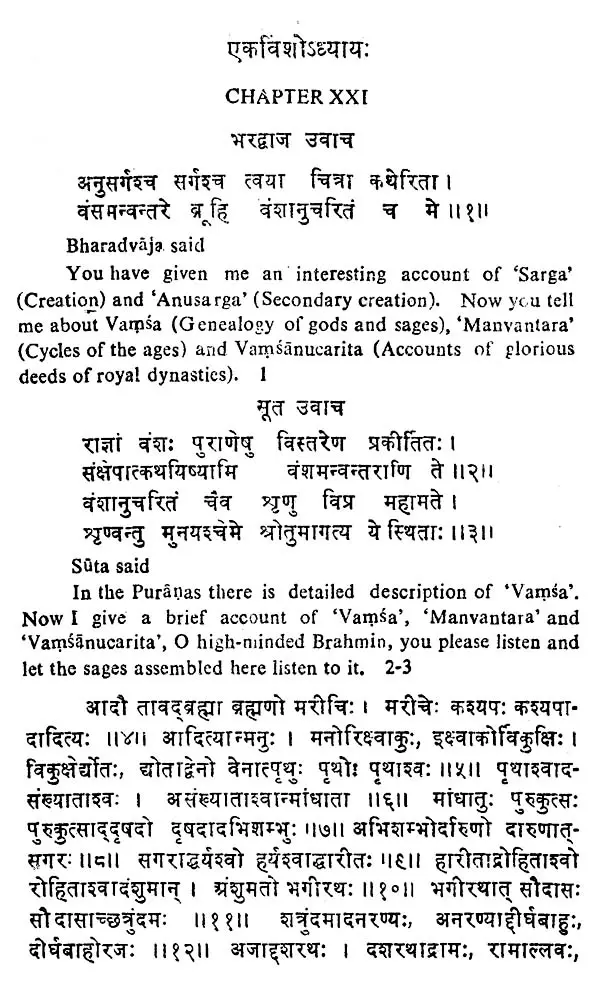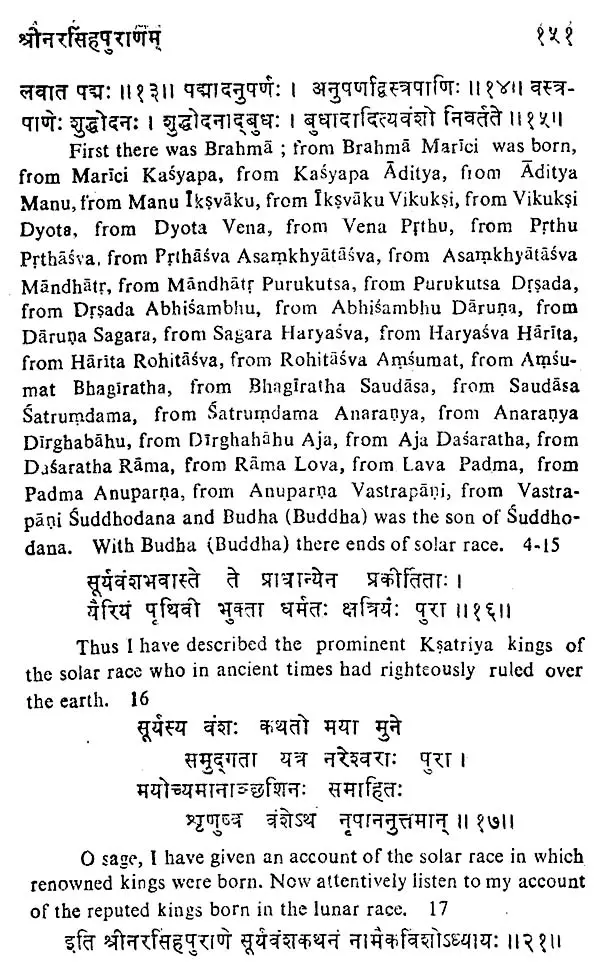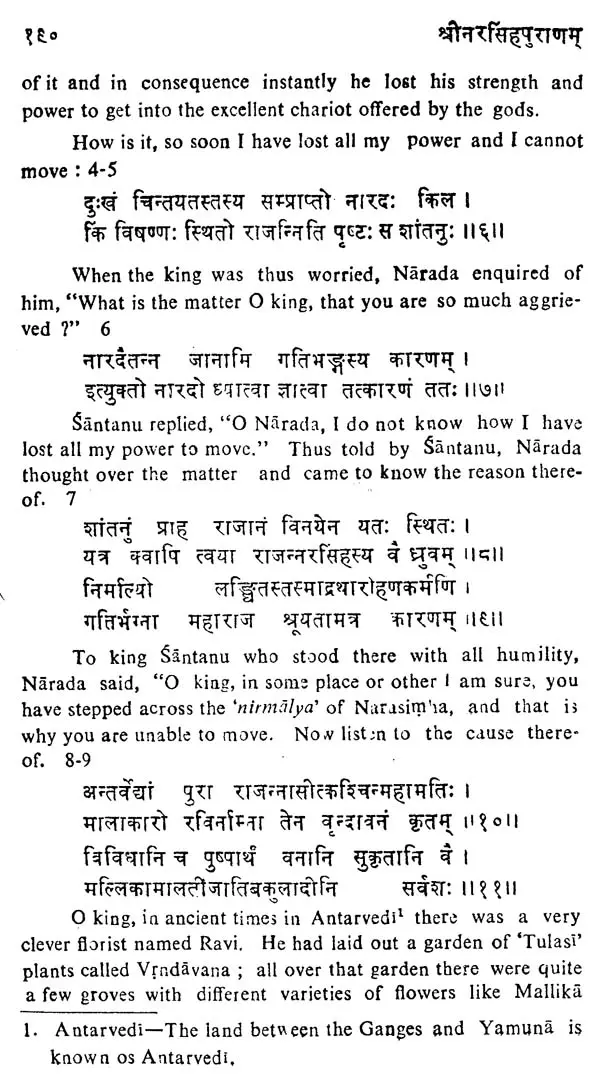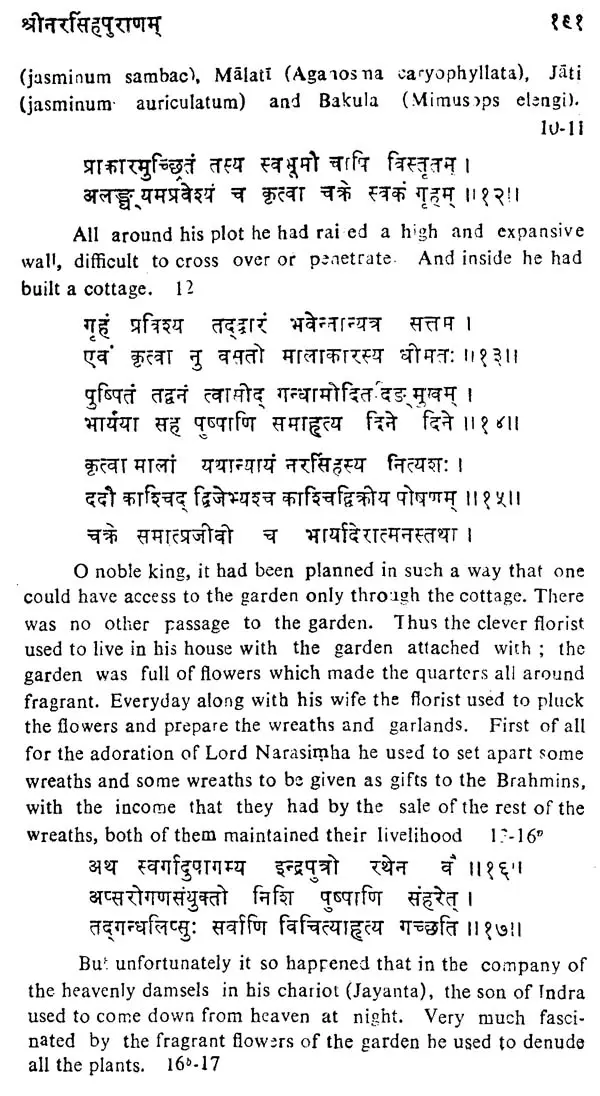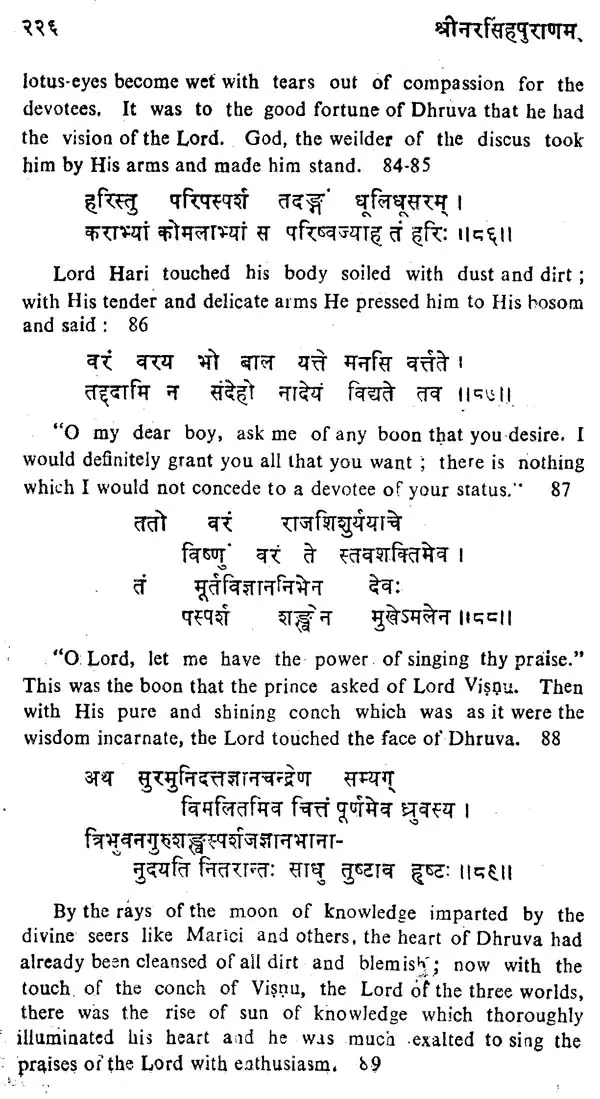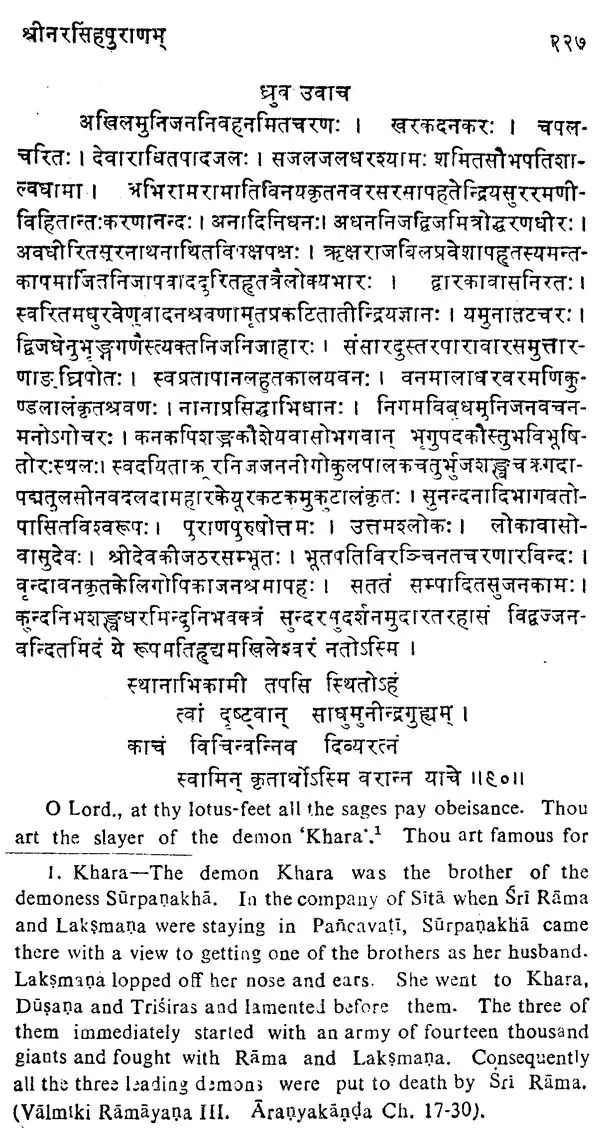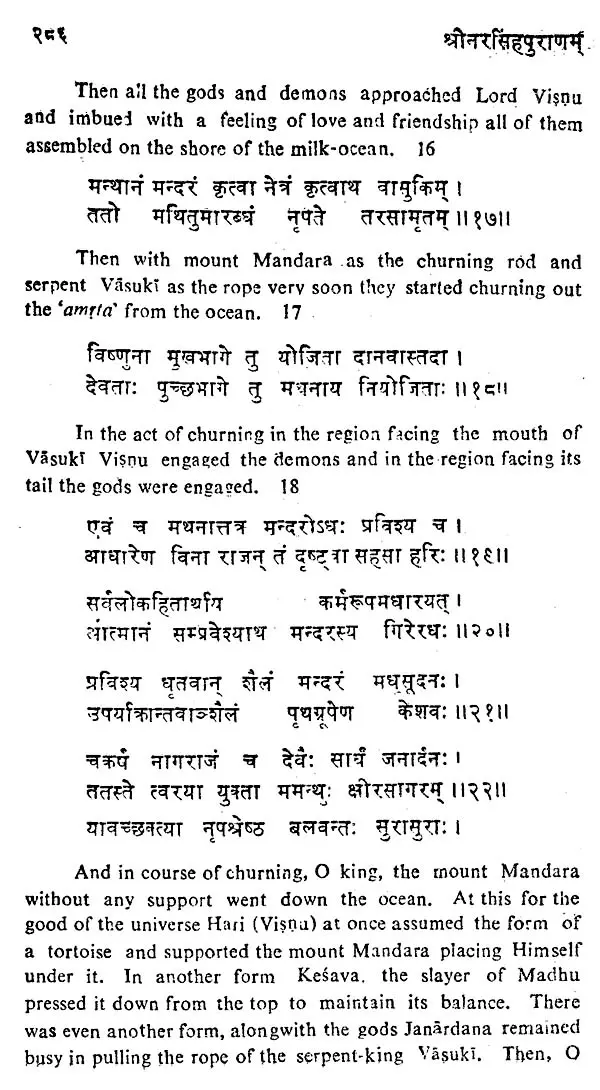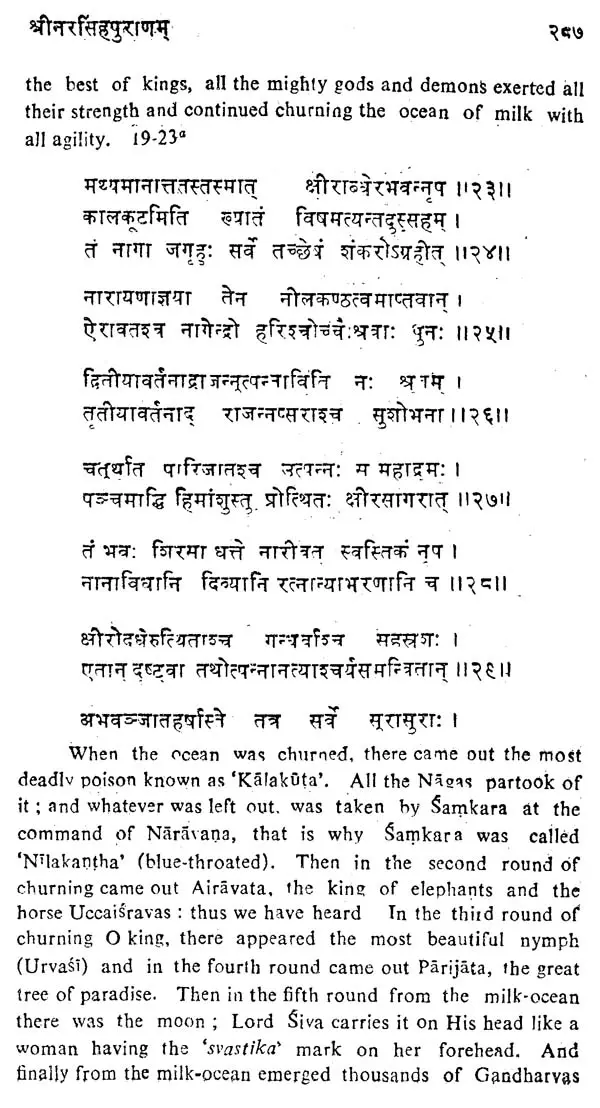
श्रीनरसिंहपुराणम्- The Narasimha-Puranam (Text in Devanagari with Translation Notes in English)
Book Specification
| Item Code: | UAN781 |
| Author: | Siddheswar Jena |
| Publisher: | NAG PRAKASHAK |
| Language: | Sanskrit Text with English Translation |
| Edition: | 2009 |
| ISBN: | 8170810892 |
| Pages: | 750 |
| Cover: | HARDCOVER |
| Other Details | 8.50 X 5.50 inch |
| Weight | 850 gm |
Book Description
The present work of Siddheswar Jena now adds the Narasihma Purana to those Puranic text which are available in English translation. All scholars interested in the history of the Vaisnava faith will highly. welcome and appreciate the fact that one of the Vaisnava Upapurans, the Sanskrit text of which has long been out of print, is now being made accessible for detailed research by Dr. Jena's translation of this important work.
The present work is an attempt at studying various problems of the Narasimha Purana. Even though the Indian way of life is rooted in Puranic tradition and culture, the study of Puragas was taken up much later in India. Wilson's translation of the Visnu Purana' heralded a new era in Indoloy. Next important name in the field of Purana is that of F. E. Pargiter who studied the Puranas from genealogical point of view. His translation of Markandeya Purana is a unique contribution to the Sanskrit world. He was followed by Kirfel, who made an intensive investigation of the Puranas and his continued efforts resulted in "Das Purana Pancalaksana" the Ur-kern of Puranas dealing with the basic five characteristics of which the Puranas were primarily constituted. Equally his 'Das Purana vom Weltgebaude' (Bhuvanavinyasa) is eye-opener for the study of geographic knowledge in India.
Among Indians mention may be made of scholars like H. P. Sastri, R. C. Hazra, Kane, A. D. Pusaker, Baladeva Upadhyaya, V. S. Agrawala, A. S. Gupta etc. who have written a number of papers covering a vast range of Purana literature. In the last two decades there have appeared some studies on particular Purapas. V. S. Agrawala makes a study of Matsya Purapa (1963), S. D. Gyani makes a study of Agni Purana (1964), Asoka Chatterjee Sastri a study of Padma Purana (1967), N. Gangadharan a study of Garuda Purana (1972) and a study of Linga Purana (1980). P. G. Lalye's "Studies in Devi-Bhagavata" appears in 1973 and K. Damodaran Nambiar's Narada Purana-A critical study is published in 1979. Of all the scholars it is Dr. Hazra who has made an extensive study of the Upa-puranas though not intensive.
Tradition says, there are eighteen Mahapurapas". The list of the Mahapuranas is given in the Purapa-texts such as Visnu, Markandeya, Varaha, Bhavisya, Padam, Brahmavai varta, Bhagavata, Matsya, Agni, Naradiya, Skanda, Kurma Linga, Siva and so on. As regards these 18 names there is some inconsistency. The Matsya (53.11-56), Agni (272.1-23), Naradiya (1.92.26-28, 1.92.30-Ch.109) and Skanda (VII Prab hasakhanda 1.2.28-77) take Vayu as one of the eighteen Mahapuranas whereas most other texts like Visnu (III.6.19 24), Markandeya (137.8-11-Venk. Edn. 134.8-15), Varaha (111 69-72), Bhavisya (I. Brahmaparvan 1.61-94), Padam (A S.S.1.Adikhanda 62.2-7, IV Patalakhanda 111.90-94, IV Uttarakhanda 219.25-27, VI. 263.77-81), Brahmavaivarta (IV. 133.11-21), Bhagavata (XI.7.23-24, 13.4-8), Kurma (1.1.13 15), Skanda (VI1.1.2.5-7), Linga (1.39.1-64) and Siva [V. Umasamhita 44.119-122, 125-135, VII. Vayaviya Samhita (1). 1.43-45) substitute Siva Furapa for Vayu.' Garuda (1.215. Cont'd.
1,92.26-28, (11) Sk.P. VII. (Prabhasakhanda) 1.2.28-77. This group follows the Visnu P. order of the names of the Mahapuranas. Of these, the latter four texts enumerate Vayu as the fourth in the list of Mahapuranas whereas the former seven texts take Siva in place of Vayu.
**Contents and Sample Pages**
